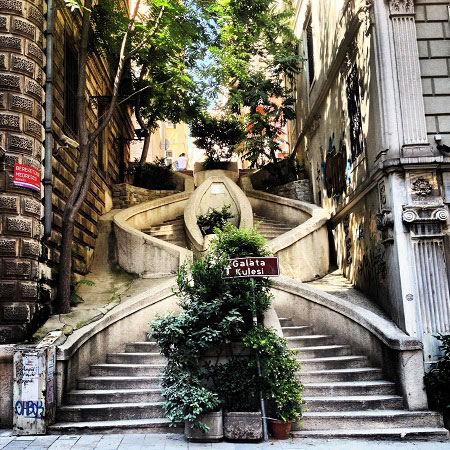The Museum:
The museum is comprised of three separate sections, enabling the visitors to be connected to vast amounts of information on history, religious rituals and social life.
Configured with a mindset of establishing a modern, contemporary museum, interactive panels have been designed and technology has been utilized throughout the premises by means of touch-screens.
The museum areas are not restricted to static informative boards and by using an interactive computer system, it is possible to add additional data whenever desired.
In the first section, Jewish history on Anatolian lands from 4th century BC to present day is told. Including the passage from the Ottoman Era to the Turkish Republic, historic events are presented in chronological order. The touch-screen panels that tell of more recent history present various topics with the accompaniment of photographs and videos. In the section devoted to journalism, examples of Jewish press in Turkey, including samples of newspapers, printing press related items and historical objects are featured.
The midrash hallway that creates the physical connection between Neve Şalom and the museum enables the observation in real time of religious ceremonies held at the synagogue. To witness rituals such as a Brit Milah (circumcision), a wedding, a Bar Mitzvah, transports a museum visitor to becoming an actual participant in the ceremony.
The section where objects used in religious rituals appear to have been brought back to life are exhibited in the midrash which is originally from the Apollon synagogue that closed down in 1982. A mystic atmosphere prevails in this section where liturgical objects are on display that were used in religious ceremonies in a variety of synagogues.
In the ethnographic section, the cycle of life from birth to death is conveyed to visitors by means of objects, documents, photographs, drawings and videos. A video projector allows the visitors to view Jewish traditions and rituals in various cities.
In the final section boards and touch-screens tell of Jewish traditions, holidays, cuisine, linguistic culture and music as well as structures such as synagogues and cemeteries located in regions with large Jewish populations. Visual and auditory elements have been frequently used in these screens. In this section, an oral history study in the Judeo-Espanyol language allows us to listen to live witnesses and this contributes to our collective memories.
A computer in the museum is available to assist visitors who wish to conduct research about the roots of Jewish life in Turkey .




